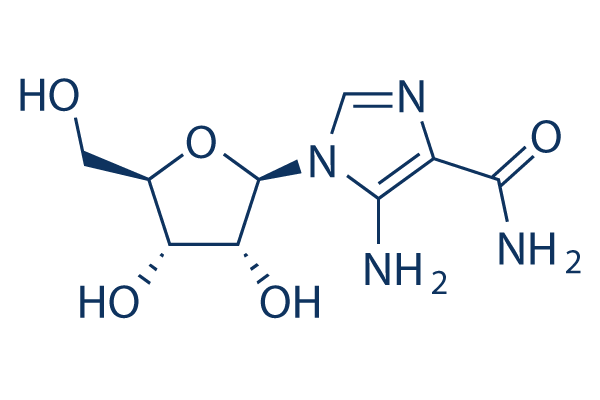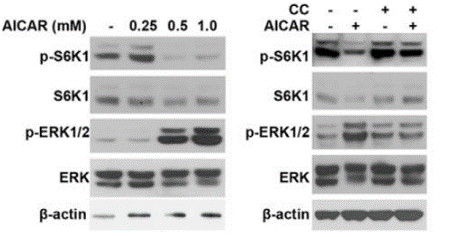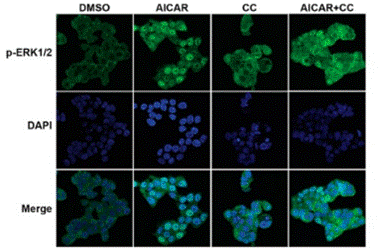
- Bioactive Compounds
- By Signaling Pathways
- PI3K/Akt/mTOR
- Epigenetics
- Methylation
- Immunology & Inflammation
- Protein Tyrosine Kinase
- Angiogenesis
- Apoptosis
- Autophagy
- ER stress & UPR
- JAK/STAT
- MAPK
- Cytoskeletal Signaling
- Cell Cycle
- TGF-beta/Smad
- Compound Libraries
- Popular Compound Libraries
- Customize Library
- Clinical and FDA-approved Related
- Bioactive Compound Libraries
- Inhibitor Related
- Natural Product Related
- Metabolism Related
- Cell Death Related
- By Signaling Pathway
- By Disease
- Anti-infection and Antiviral Related
- Neuronal and Immunology Related
- Fragment and Covalent Related
- FDA-approved Drug Library
- FDA-approved & Passed Phase I Drug Library
- Preclinical/Clinical Compound Library
- Bioactive Compound Library-I
- Bioactive Compound Library-Ⅱ
- Kinase Inhibitor Library
- Express-Pick Library
- Natural Product Library
- Human Endogenous Metabolite Compound Library
- Alkaloid Compound LibraryNew
- Angiogenesis Related compound Library
- Anti-Aging Compound Library
- Anti-alzheimer Disease Compound Library
- Antibiotics compound Library
- Anti-cancer Compound Library
- Anti-cancer Compound Library-Ⅱ
- Anti-cancer Metabolism Compound Library
- Anti-Cardiovascular Disease Compound Library
- Anti-diabetic Compound Library
- Anti-infection Compound Library
- Antioxidant Compound Library
- Anti-parasitic Compound Library
- Antiviral Compound Library
- Apoptosis Compound Library
- Autophagy Compound Library
- Calcium Channel Blocker LibraryNew
- Cambridge Cancer Compound Library
- Carbohydrate Metabolism Compound LibraryNew
- Cell Cycle compound library
- CNS-Penetrant Compound Library
- Covalent Inhibitor Library
- Cytokine Inhibitor LibraryNew
- Cytoskeletal Signaling Pathway Compound Library
- DNA Damage/DNA Repair compound Library
- Drug-like Compound Library
- Endoplasmic Reticulum Stress Compound Library
- Epigenetics Compound Library
- Exosome Secretion Related Compound LibraryNew
- FDA-approved Anticancer Drug LibraryNew
- Ferroptosis Compound Library
- Flavonoid Compound Library
- Fragment Library
- Glutamine Metabolism Compound Library
- Glycolysis Compound Library
- GPCR Compound Library
- Gut Microbial Metabolite Library
- HIF-1 Signaling Pathway Compound Library
- Highly Selective Inhibitor Library
- Histone modification compound library
- HTS Library for Drug Discovery
- Human Hormone Related Compound LibraryNew
- Human Transcription Factor Compound LibraryNew
- Immunology/Inflammation Compound Library
- Inhibitor Library
- Ion Channel Ligand Library
- JAK/STAT compound library
- Lipid Metabolism Compound LibraryNew
- Macrocyclic Compound Library
- MAPK Inhibitor Library
- Medicine Food Homology Compound Library
- Metabolism Compound Library
- Methylation Compound Library
- Mouse Metabolite Compound LibraryNew
- Natural Organic Compound Library
- Neuronal Signaling Compound Library
- NF-κB Signaling Compound Library
- Nucleoside Analogue Library
- Obesity Compound Library
- Oxidative Stress Compound LibraryNew
- Plant Extract Library
- Phenotypic Screening Library
- PI3K/Akt Inhibitor Library
- Protease Inhibitor Library
- Protein-protein Interaction Inhibitor Library
- Pyroptosis Compound Library
- Small Molecule Immuno-Oncology Compound Library
- Mitochondria-Targeted Compound LibraryNew
- Stem Cell Differentiation Compound LibraryNew
- Stem Cell Signaling Compound Library
- Natural Phenol Compound LibraryNew
- Natural Terpenoid Compound LibraryNew
- TGF-beta/Smad compound library
- Traditional Chinese Medicine Library
- Tyrosine Kinase Inhibitor Library
- Ubiquitination Compound Library
-
Cherry Picking
You can personalize your library with chemicals from within Selleck's inventory. Build the right library for your research endeavors by choosing from compounds in all of our available libraries.
Please contact us at [email protected] to customize your library.
You could select:
- Antibodies
- Bioreagents
- qPCR
- 2x SYBR Green qPCR Master Mix
- 2x SYBR Green qPCR Master Mix(Low ROX)
- 2x SYBR Green qPCR Master Mix(High ROX)
- Protein Assay
- Protein A/G Magnetic Beads for IP
- Anti-DYKDDDDK Tag magnetic beads
- Anti-DYKDDDDK Tag Affinity Gel
- Anti-Myc magnetic beads
- Anti-HA magnetic beads
- Poly DYKDDDDK Tag Peptide lyophilized powder
- Protease Inhibitor Cocktail
- Protease Inhibitor Cocktail (EDTA-Free, 100X in DMSO)
- Phosphatase Inhibitor Cocktail (2 Tubes, 100X)
- Cell Biology
- Cell Counting Kit-8 (CCK-8)
- Animal Experiment
- Mouse Direct PCR Kit (For Genotyping)
- New Products
- Contact Us
AICAR (Acadesine)
Synonyms: NSC105823, AICA Riboside
AICAR (Acadesine, NSC105823, AICA Riboside), an AMPK activator, results in accumulation of ZMP, which mimics the stimulating effect of AMP on AMPK and AMPK kinase. AICAR (Acadesine) induces mitophagy. Phase 3.

AICAR (Acadesine) Chemical Structure
CAS: 2627-69-2
Selleck's AICAR (Acadesine) has been cited by 147 publications
Purity & Quality Control
Batch:
Purity:
99.97%
99.97
Products often used together with AICAR (Acadesine)
Acadesine and Rituximab inhibits tumor outgrowth in the CB17-SCID mouse xenograft model of mantle cell lymphoma.
AICAR and 17-AAG treatment reduces cell proliferation and affects chromosome segregation in MEFs and human cancer cells.
Acadesine and Venetoclax together are effective in inhibiting tumor growth in a mouse model of mantle cell lymphoma with high Bcl-2 expression.
Montraveta A, et al. Oncotarget. 2015 Aug 28;6(25):21159-72.
Nutlin-3a shows no synergistic activity with acadesine as it induces p53-independent apoptosis.
Acadesine and Metformin as AMPK activators hinder miR-146a expression at the transcriptional level by promoting IκB kinase (IKK) phosphorylation to attenuate nuclear factor-kappaB (NF-κB) activity.
Other AMPK Products
Related compound libraries
Choose Selective AMPK Inhibitors
Cell Data
| Cell Lines | Assay Type | Concentration | Incubation Time | Formulation | Activity Description | PMID |
|---|---|---|---|---|---|---|
| 3T3L1 | Function assay | 0.2 mM | 9 days | Increase in AMPKalpha Thr172 phosphorylation in mouse 3T3L1 cells at 0.2 mM after 9 days by Western blot method | 26088335 | |
| 3T3L1 | Function assay | 500 μM | 5 h | Activation of AMPK in mouse 3T3L1 cells assessed as AMPK phosphorylation at 500 uM after 5 hrs by Western blotting analysis | 25262940 | |
| C2C12 | Function assay | 1 mM | 1 hr | Activation of AMPK in mouse C2C12 cells assessed as increase in ACC phosphorylation at Ser79 residues at 1 mM after 1 hr by Western blot analysis | 27887844 | |
| 3T3L1 | Function assay | 2 mM | 4 hrs | Induction of AMPKalpha phosphorylation at Thr172 residue in mouse 3T3L1 cells at 2 mM after 4 hrs by Western blot analysis | 29425817 | |
| C2C12 | Function assay | 0.2 mM | 30 mins | Inhibition of PTP1B in differentiated mouse C2C12 cells assessed as upregulation of ACC phosphorylation at Ser-79 residue at 0.2 mM after 30 mins by Western blot assay | 28951079 | |
| RCC4 | Function assay | 1 mM | 48 hrs | Induction of autophagy in human RCC4 cells assessed as increase in LC3 conversion at 1 mM after 48 hrs by Western blot method | 28325600 | |
| 3T3L1 | Function assay | 0.2 mM | Inhibition of adipogenesis in mouse 3T3L1 cells assessed as reduction in triglyceride content at 0.2 mM by colorimetric assay | 26088335 | ||
| 3T3L1 | Function assay | 0.2 mM | 3 days | Reduction in SCD1 protein expression in mouse 3T3L1 cells at 0.2 mM after 3 days by Western blot method | 26088335 | |
| 3T3L1 | Function assay | 0.2 mM | 3 days | Reduction in SREBP-1c protein expression in mouse 3T3L1 cells at 0.2 mM after 3 days by Western blot method | 26088335 | |
| 3T3L1 | Function assay | 0.2 mM | 9 days | Activation of AMPK in mouse 3T3L1 cells assessed as increase in ACC Ser79 phosphorylation at 0.2 mM after 9 days by Western blot method | 26088335 | |
| 3T3L1 | Function assay | 0.2 mM | 3 days | Reduction in C/EBPalpha protein expression in mouse 3T3L1 cells at 0.2 mM after 3 days by Western blot method | 26088335 | |
| 3T3L1 | Function assay | 0.2 mM | 3 days | Reduction in PPARgamma protein expression in mouse 3T3L1 cells at 0.2 mM after 3 days by Western blot method | 26088335 | |
| 3T3L1 | Function assay | 0.2 mM | 3 days | Reduction in FAS protein expression in mouse 3T3L1 cells at 0.2 mM after 3 days by Western blot method | 26088335 | |
| Click to View More Cell Line Experimental Data | ||||||
Biological Activity
| Description | AICAR (Acadesine, NSC105823, AICA Riboside), an AMPK activator, results in accumulation of ZMP, which mimics the stimulating effect of AMP on AMPK and AMPK kinase. AICAR (Acadesine) induces mitophagy. Phase 3. | ||
|---|---|---|---|
| Features | A potential first-in-class adenosine regulating agent (ARA). | ||
| Targets |
|
| In vitro | ||||
| In vitro | Acadesine (500 μM) increases the ZMP content in extracts of isolated hepatocytes after up to 30-40 min treatment, then remains fairly constant at approximately 4 nmol/g. Acadesine (500 μM) causes a transient 12-fold activation of AMPK at 15 min in rat hepatocytes and 2-3 fold activation of AMPK in adipocytes, without affecting levels of ATP, ADP or AMP. Acadesine (500 μM) causes a dramatic inhibition of both fatty acid and sterol synthesis in rat hepatocytes. Acadesine (500 μM) also causes a dramatic inactivation of HMG-CoA reductase. [1] Acadesine induces apoptosis of B-CLL cells in a dose-dependent manner with EC50 of 380 μM. Acadesine (0.5 mM) decreases cell viability of B-CLL cells from 20 representative patients from 68% to 26%. Acadesine (0.5 mM) induces caspase activation and cytochrome crelease from mitochondria. Uptake and phosphorylation of Acadesine (0.5 mM) are required to induce apoptosis and activate AMPK in B-CLL cells. Acadesine (2-4 mM) only slightly affects the viability of T cells from B-CLL patients, Acadesine (0.5 mM) remarkedly reduces viability of B cells but not T cells. [2] Acadesine triggers loss of cell metabolism in K562, LAMA-84 and JURL-MK1 and is also effective in killing imatinib-resistant K562 cells and Ba/F3 cells carrying the T315I-BCR-ABL mutation. The effect of Acadesine is abrogated by GF109203X and Ro-32-0432, both inhibitor of classical and new PKCs and accordingly, Acadesine triggers relocation and activation of several PKC isoforms in K562 cells. Acadesine dose-dependently inhibits K562 colony formation at day 10, the growth inhibitory effect of acadesine is already detected at 0.25 mM and is maximal at 2.5 mM. [3] Acadesine causes a concentration-related reduction in CD18 expression on LPS-stimulated neutrophils in vitro. [4] Acadesine significantly (1 mM) inhibits N-formyl-methionyl-leucyl-phenylalanine-induced granulocyte CD11b up-regulation by a mean of 61% in blood. [5] | |||
|---|---|---|---|---|
| Cell Research | Cell lines | K562 cell lines | ||
| Concentrations | 2.5 mM | |||
| Incubation Time | 10 days | |||
| Method | Acadesine is added to K562 cell lines or primary cells (103 CD34+ cells/mL) growing in semisolid methyl cellulose medium. MethoCult H4100 or H4236 are used for cell lines and primary CD34+ cells respectively. Colonies are detected after 10 days of culture by adding 1 mg/mL of 3-(4,5-dimethylthiazol-2-yl)-2,5-diphenyltetrazolium bromide (MTT) reagent and are scored by Image J quantification software. |
|||
| Experimental Result Images | Methods | Biomarkers | Images | PMID |
| Western blot | p-S6K1 / S6K1 / p-ERK / ERK p-IRS-1 / IRS-1 / p-AKT / AKT p-AMPK / p-ACC / p-eNOS / eNOS / vWF / VE-cadherin / ICAM-1 Cyclin D1 / p21 / p53 |

|
26528831 | |
| Immunofluorescence | p-ERK YAZ / TAZ |

|
26528831 | |
| In Vivo | ||
| In vivo | Acadesine (50 mg/kg) significantly reduces tumor formation in a mouse xenograft model of K562 cells. [3] Acadesine (10 mg/kg) results in higher fluid required to stabilize hemodynamics in pigs. Acadesine (10 mg/kg) inhibits LPS-induced protein permeability of pulmonary capillaries, peak inspiratory pressures on constant tidal volume and dead space ventilation in pigs. [4] | |
|---|---|---|
| Animal Research | Animal Models | mouse xenograft model of K562 cells |
| Dosages | 50 mg/kg | |
| Administration | Injected intraperitoneally | |
Chemical lnformation & Solubility
| Molecular Weight | 258.23 | Formula | C9H14N4O5 |
| CAS No. | 2627-69-2 | SDF | Download AICAR (Acadesine) SDF |
| Smiles | C1=NC(=C(N1C2C(C(C(O2)CO)O)O)N)C(=O)N | ||
| Storage (From the date of receipt) | |||
|
In vitro |
DMSO : 51 mg/mL ( (197.49 mM); Moisture-absorbing DMSO reduces solubility. Please use fresh DMSO.) Water : 20 mg/mL Ethanol : Insoluble |
Molecular Weight Calculator |
|
In vivo Add solvents to the product individually and in order. |
In vivo Formulation Calculator |
||||
Preparing Stock Solutions
Molarity Calculator
In vivo Formulation Calculator (Clear solution)
Step 1: Enter information below (Recommended: An additional animal making an allowance for loss during the experiment)
mg/kg
g
μL
Step 2: Enter the in vivo formulation (This is only the calculator, not formulation. Please contact us first if there is no in vivo formulation at the solubility Section.)
% DMSO
%
% Tween 80
% ddH2O
%DMSO
%
Calculation results:
Working concentration: mg/ml;
Method for preparing DMSO master liquid: mg drug pre-dissolved in μL DMSO ( Master liquid concentration mg/mL, Please contact us first if the concentration exceeds the DMSO solubility of the batch of drug. )
Method for preparing in vivo formulation: Take μL DMSO master liquid, next addμL PEG300, mix and clarify, next addμL Tween 80, mix and clarify, next add μL ddH2O, mix and clarify.
Method for preparing in vivo formulation: Take μL DMSO master liquid, next add μL Corn oil, mix and clarify.
Note: 1. Please make sure the liquid is clear before adding the next solvent.
2. Be sure to add the solvent(s) in order. You must ensure that the solution obtained, in the previous addition, is a clear solution before proceeding to add the next solvent. Physical methods such
as vortex, ultrasound or hot water bath can be used to aid dissolving.
Tech Support
Answers to questions you may have can be found in the inhibitor handling instructions. Topics include how to prepare stock solutions, how to store inhibitors, and issues that need special attention for cell-based assays and animal experiments.
Tel: +1-832-582-8158 Ext:3
If you have any other enquiries, please leave a message.
* Indicates a Required Field
Tags: buy AICAR (Acadesine) | AICAR (Acadesine) supplier | purchase AICAR (Acadesine) | AICAR (Acadesine) cost | AICAR (Acadesine) manufacturer | order AICAR (Acadesine) | AICAR (Acadesine) distributor







































